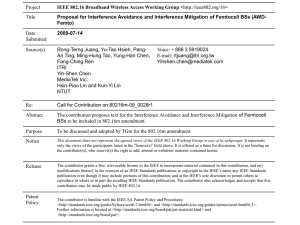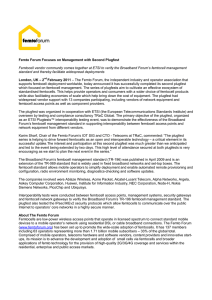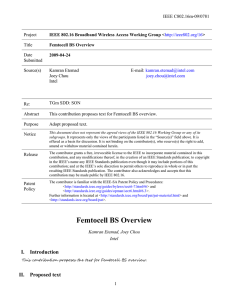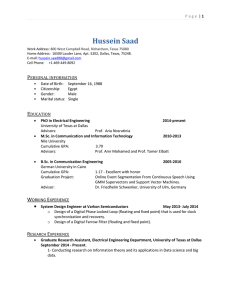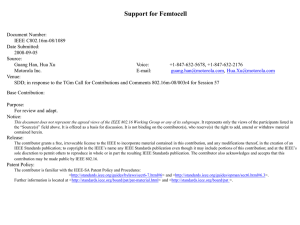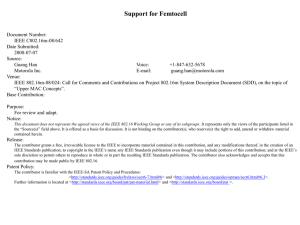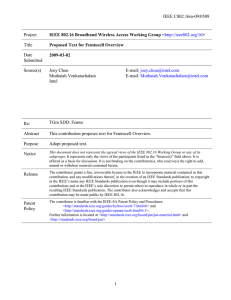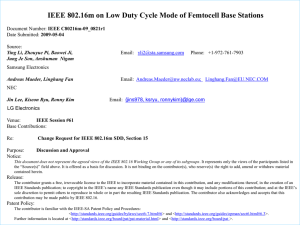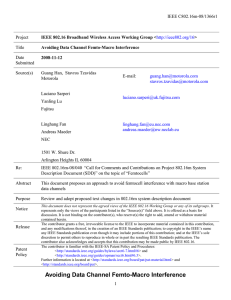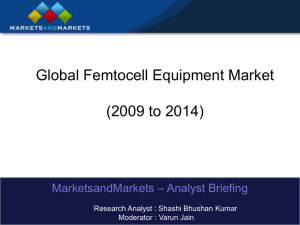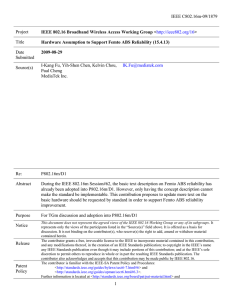Femtocell-based business models using TV white spaces
advertisement
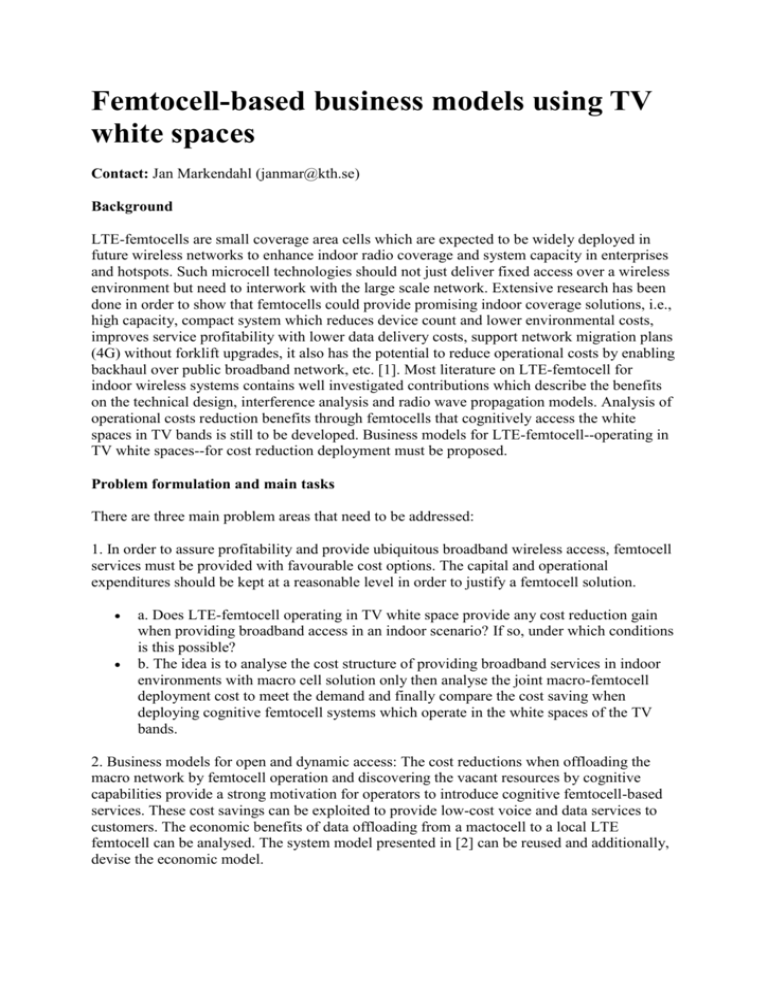
Femtocell-based business models using TV white spaces Contact: Jan Markendahl (janmar@kth.se) Background LTE-femtocells are small coverage area cells which are expected to be widely deployed in future wireless networks to enhance indoor radio coverage and system capacity in enterprises and hotspots. Such microcell technologies should not just deliver fixed access over a wireless environment but need to interwork with the large scale network. Extensive research has been done in order to show that femtocells could provide promising indoor coverage solutions, i.e., high capacity, compact system which reduces device count and lower environmental costs, improves service profitability with lower data delivery costs, support network migration plans (4G) without forklift upgrades, it also has the potential to reduce operational costs by enabling backhaul over public broadband network, etc. [1]. Most literature on LTE-femtocell for indoor wireless systems contains well investigated contributions which describe the benefits on the technical design, interference analysis and radio wave propagation models. Analysis of operational costs reduction benefits through femtocells that cognitively access the white spaces in TV bands is still to be developed. Business models for LTE-femtocell--operating in TV white spaces--for cost reduction deployment must be proposed. Problem formulation and main tasks There are three main problem areas that need to be addressed: 1. In order to assure profitability and provide ubiquitous broadband wireless access, femtocell services must be provided with favourable cost options. The capital and operational expenditures should be kept at a reasonable level in order to justify a femtocell solution. a. Does LTE-femtocell operating in TV white space provide any cost reduction gain when providing broadband access in an indoor scenario? If so, under which conditions is this possible? b. The idea is to analyse the cost structure of providing broadband services in indoor environments with macro cell solution only then analyse the joint macro-femtocell deployment cost to meet the demand and finally compare the cost saving when deploying cognitive femtocell systems which operate in the white spaces of the TV bands. 2. Business models for open and dynamic access: The cost reductions when offloading the macro network by femtocell operation and discovering the vacant resources by cognitive capabilities provide a strong motivation for operators to introduce cognitive femtocell-based services. These cost savings can be exploited to provide low-cost voice and data services to customers. The economic benefits of data offloading from a mactocell to a local LTE femtocell can be analysed. The system model presented in [2] can be reused and additionally, devise the economic model. 3. Assuming a network where indoor users own their femtocell equipment, some more practical and streamlined business models could to be developed to improve operators’ profitability. This could be done by encouraging the femtocell owners to be willing to share their resources with secondary users. Moreover, charging models and service agreements for cognitive femtocell users are to be defined. This work could be done by three master students. References [1] Solution Briefs & Overviews, “Scalable Security Gateway Functions for Commercial Femtocell Deployments and Beyond”, STOKE report August 2011, Available at: http://www.stoke.com/Document_Library.asp, [2] Peng Lin, Jin Zhang, Yanjiao Chen, and Qian Zhang, “Macro-Femto Heterogeneous Network Deployment and Management: From Business Models to Technical Solutions”, IEEE Wireless Communications, June 2011. Available at: http://ieeexplore.ieee.org/stamp/stamp.jsp?tp=&arnumber=5876502 [3] Doru Clain, Holger Claussen and Huseyin Uzunalioglu, “On Femto Deployment Architectures and Macrocell Offloading Benefits in Joint Macro-Femto Deployments”, IEEE Communication Magazine, January 2010. Available at: http://ieeexplore.ieee.org/stamp/stamp.jsp?tp=&arnumber=5394026 [4] Milind M. Buddhikot, Irwin Kennedy, Frank Mullany, and Harish Viswanathan, “UltraBroadband Femtocells via Opportunistic Reuse of Multi-Operator and Multi-Service Spectrum”, Bell Labs Technical Journal 2009, Available at: http://www.belllabs.com/user/mbuddhikot/psdocs/cogfemto/BLTJ134_08_129-144-photoready.pdf [5] Gürkan Gür, Suzan Bayhan, and Fatih Alagöz, “Cognitive Femtocell Networks: An overlay Architecture for Localized Dynamic Spectrum Access”, IEEE Wireless Communications, August 2010, Available at: http://ieeexplore.ieee.org/stamp/stamp.jsp?tp=&arnumber=5547923 [6] William Gerhardt and Richard Medcalf, “In Femtocells: Implementing a Better Business Model To Increase SP Profitability”, Cisco Internet Business Solutions Group (IBSG), March 2010, Available at http://www.cisco.com/en/US/solutions/ns341/ns973/ns941/femtocell_point_of_view.pdf
